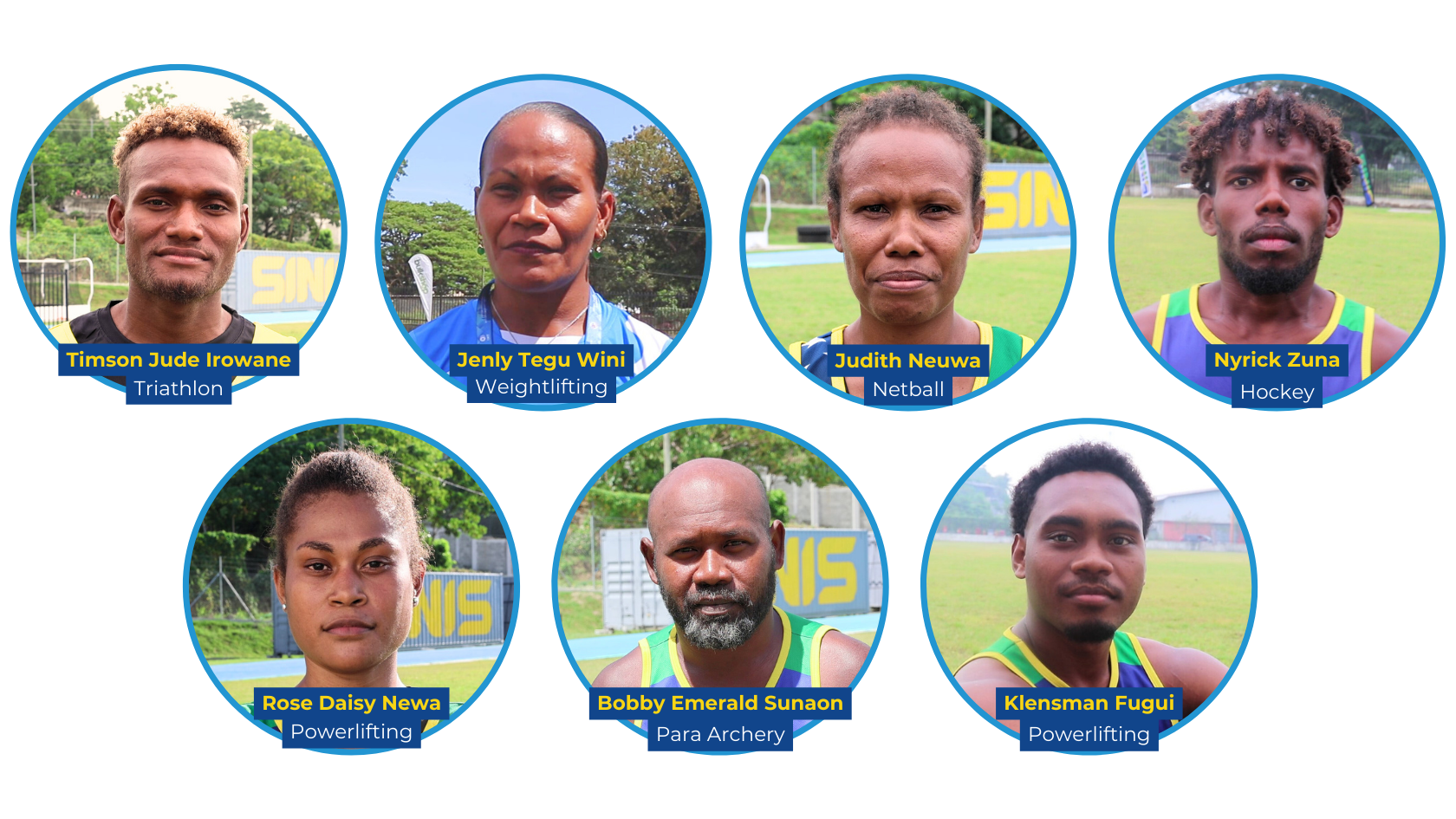





WHY IS IT IMPORTANT TO #KEEPKIDSSAFE IN SPORT?
WHY IS IT IMPORTANT TO #KEEPKIDSSAFE IN SPORT?
Every child has a right to be safe from abuse and exploitation, during their lives and as they participate in sport. On this page, you will find information about the prevalence and characteristics of child abuse and exploitation in sport, highlighting the importance of creating a safe environment where children can thrive and participate in sport without experiencing harm.
Information relating to child safety and protection from abuse and exploitation may bring up strong feelings. Remember, you are not alone. If you need assistance or support, you can access a list of dedicated services on our Finding Help page.
Key Facts
Sport has been identified as an institutional setting where children and adolescents are vulnerable to abuse from peers, coaches, parents, officials, administrators or members of the medical team.
- High profile cases of young athletes being abused whilst competing have drawn attention to the issue of child protection in sports all over the world.
- A 2023 study of Australian community sport found that 82% of respondents experienced violence in sport as a child. Psychological violence was most prevalent (76%), followed by physical (66%) and sexual (38%) violence. 1
- 408 survivors interviewed by the Royal Commission into Institutional Responses to Child Sexual Abuse (Australia) experienced child sexual abuse in sport and recreation settings. 2
1 Pankowiak, A. et al (2023). Psychological, Physical, and Sexual Violence Against Children in Australian Community Sport: Frequency, Perpetrator, and Victim Characteristics. Journal of Interpersonal Violence, 38(3–4), 4338–4365.
2 Commonwealth of Australia (2017). Royal Commission into Institutional Responses to Child Sexual Abuse – Final Report: Volume 14, Sport, recreation, arts, culture, community and hobby groups.
Abuse in sport can take many forms, including:
- Physical abuse – including harmful contact such as punching or kicking, age-inappropriate or forced training, including while injured or in pain.
- Sexual abuse – including sexist comments and gestures, making sexual comments to a child, and sexual assault.
- Emotional abuse – including humiliation, scapegoating, threats, rejection.
- Neglect – including isolation, being ignored, denial of attention or support.
Research also shows that the risk of abuse rises as a child progresses on the elite sport pathway.
What can grooming look like in sport and recreation settings?
When a child is abused in sport and recreation settings, grooming is often a precursor to abuse. Grooming is when someone builds a relationship, trust and emotional connection with a child or young person and/or their parents or caregivers so they can manipulate, exploit, and ultimately abuse them. This may occur online or offline.
Often these people can be in a position of trust over the child – for example, a coach, teacher, medical team member or sports official.
As explained in the findings of the Royal Commission into Institutional Responses to Child Sexual Abuse, grooming in sport and recreational settings often involves:
- Seeking access – Perpetrators may look for jobs or volunteer roles with regular contact with children – and actively seek out organisations with unclear boundaries and policies.
- Testing the culture – Perpetrators may break small rules to test whether they are challenged about their behaviour. If left unchallenged, it provides an environment for these policy breaches to escalate.
- Coaching relationships – Perpetrators can exploit their power and authority over children through private and exclusive coach or instructor relationships, or having control over how a child progresses in their sport.
- Inappropriate activity and adult material – Many survivors of child sexual abuse in sport and recreation settings indicate that alcohol and other enticements were used by perpetrators as a form of grooming.
- Erosion of interpersonal boundaries – Coaches can shift the interpersonal boundaries from the acceptable, for example, legitimate touching to correct a swim stroke, to the inappropriate.
- Targeting vulnerability – Research indicates that young players who are experiencing difficulties in their home life can be particular targets for perpetrators. Many survivors describe family conflict, family violence or family break-up at the time of the abuse. Children from culturally and linguistically diverse backgrounds, children who are disabled and Indigenous children may also be more vulnerable.
Safeguards to Put in Place to #KeepKidsSafe in Sport
There are practical and tangible actions that can and should be followed by anyone involved in the delivery of programmes, services or activities to children participating in sport. By implementing these measures, you can help create a safer environment for children and prevent abuse and exploitation in sports.
1
HAVE A SAFEGUARDING POLICY
A safeguarding policy establishes your organisation’s commitment to protecting children from harm. It clearly lays out proper protocols and definitions for everyone involved – staff, coaches, athletes, volunteers, and partners.
2
KNOW WHAT TO DO IF YOU ARE WORRIED ABOUT A CHILD
Having step-by-step guidance in place in the event of a safeguarding concern means your organisation will know how to respond quickly, properly, and transparently. These procedures range from designating a safeguarding focal point to outlining how concerns are documented and monitored.
3
PROVIDE ADVICE AND SUPPORT TO STAFF AND CHILDREN
Those involved with your organisation deserve to know what their safeguarding role is, and where they can turn to for information and guidance – not only within your organisation, but externally as well. And remember, children with additional vulnerabilities will need additional support.
4
UNDERSTAND AND ADDRESS RISK
If you don’t understand and identify potential risks, you won’t know how to prevent or minimise them. Ongoing risk assessments for activities, transport, accommodation and spaces, and training for staff will help you reduce the possibility of harm, or decide whether to abandon an activity altogether.
5
AGREE WHAT IS ACCEPTABLE AND UNACCEPTABLE BEHAVIOUR
Children’s sport should be carried out in a safe and encouraging environment. Creating and sharing codes of conduct for adults and children sets a safeguarding standard, encourages mutual respect, and promotes best practice among all involved.
6
SAFELY RECRUIT AND TRAIN YOUR STAFF
Everyone within your organisation has a role to play in safeguarding children. By developing a safe recruitment and staff development strategy, you will be able to recruit the right staff members, who will be able to learn and maintain necessary safeguarding skills.
7
SHARE SAFEGUARDING WITH YOUR PARTNERS
Having your partners on board with your safeguarding policy adds an extra layer of protection for children. Setting clear and transparent safeguarding expectations helps create strong and supportive partnerships. You can also encourage and support your partners to strengthen their own approach to safeguarding.
8
MONITOR, EVALUATE AND LEARN
Safeguarding isn’t a one-off process. As you continue on your safeguarding journey, build in time for reassessment in order to understand what’s been effective and what needs improvement.
Safeguards to Put in Place to #KeepKidsSafe in Sport
There are practical and tangible actions that can and should be followed by anyone involved in the delivery of programmes, services or activities to children participating in sport. By implementing these measures, you can help create a safer environment for children and prevent abuse and exploitation in sports.
1
HAVE A SAFEGUARDING POLICY
A safeguarding policy establishes your organisation’s commitment to protecting children from harm. It clearly lays out proper protocols and definitions for everyone involved – staff, coaches, athletes, volunteers, and partners.
2
KNOW WHAT TO DO IF YOU ARE WORRIED ABOUT A CHILD
Having step-by-step guidance in place in the event of a safeguarding concern means your organisation will know how to respond quickly, properly, and transparently. These procedures range from designating a safeguarding focal point to outlining how concerns are documented and monitored.
3
PROVIDE ADVICE AND SUPPORT TO STAFF AND CHILDREN
Those involved with your organisation deserve to know what their safeguarding role is, and where they can turn to for information and guidance – not only within your organisation, but externally as well. And remember, children with additional vulnerabilities will need additional support.
4
UNDERSTAND AND ADDRESS RISK
If you don’t understand and identify potential risks, you won’t know how to prevent or minimise them. Ongoing risk assessments for activities, transport, accommodation and spaces, and training for staff will help you reduce the possibility of harm, or decide whether to abandon an activity altogether.
5
AGREE WHAT IS ACCEPTABLE AND UNACCEPTABLE BEHAVIOUR
Children’s sport should be carried out in a safe and encouraging environment. Creating and sharing codes of conduct for adults and children sets a safeguarding standard, encourages mutual respect, and promotes best practice among all involved.
6
SAFELY RECRUIT AND TRAIN YOUR STAFF
Everyone within your organisation has a role to play in safeguarding children. By developing a safe recruitment and staff development strategy, you will be able to recruit the right staff members, who will be able to learn and maintain necessary safeguarding skills.
7
SHARE SAFEGUARDING WITH YOUR PARTNERS
Having your partners on board with your safeguarding policy adds an extra layer of protection for children. Setting clear and transparent safeguarding expectations helps create strong and supportive partnerships. You can also encourage and support your partners to strengthen their own approach to safeguarding.
8
MONITOR, EVALUATE AND LEARN
Safeguarding isn’t a one-off process. As you continue on your safeguarding journey, build in time for reassessment in order to understand what’s been effective and what needs improvement.




